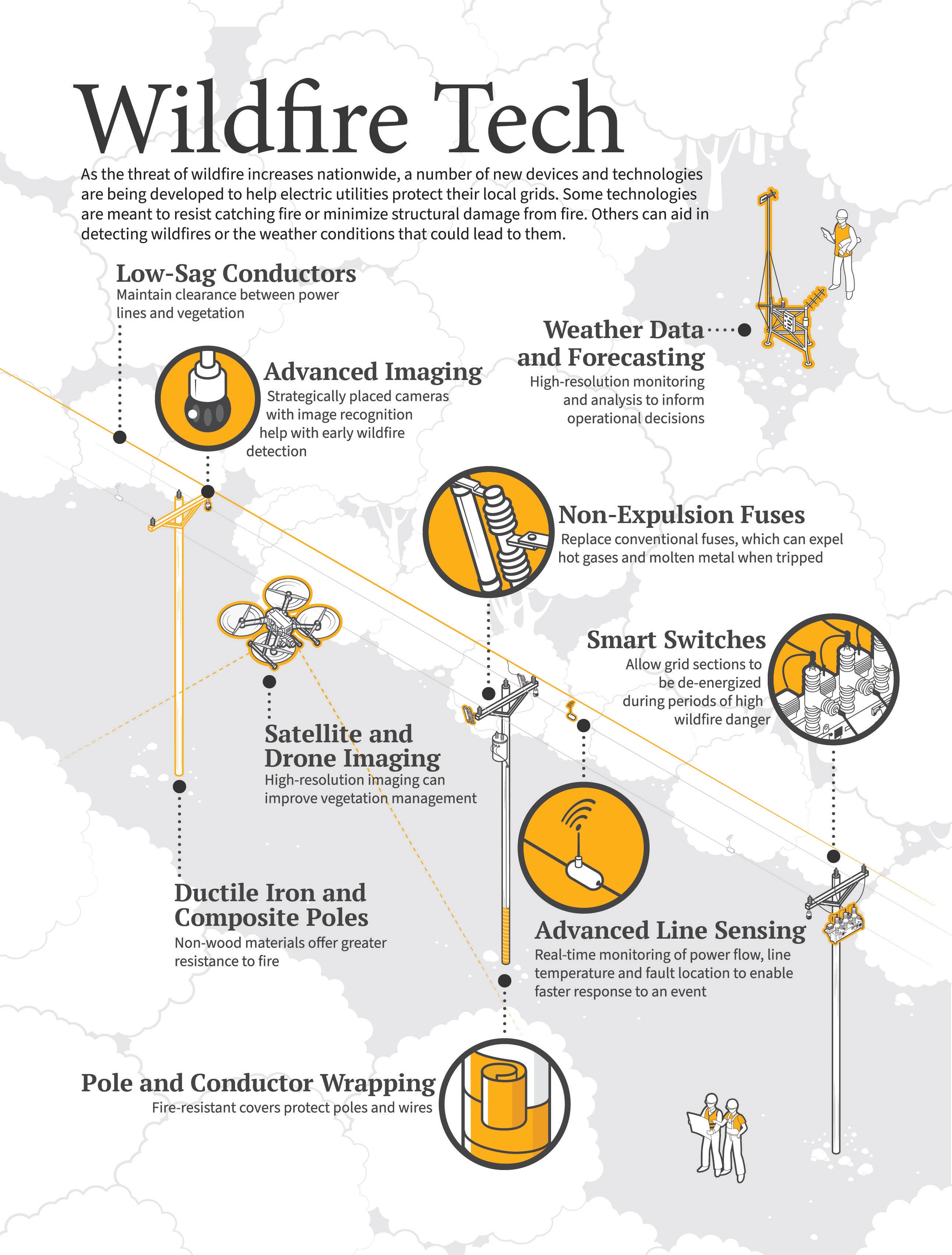Preparing for the growing threat of wildfire, by Eric Eriksen
Across the U.S., the threat of wildfire has increased significantly in recent years. For electric utilities, the danger is all too real, as dry vegetation can easily ignite from power line contact—especially during periods of high winds, which can accelerate the spread of wildfire.
In some cases, electric utilities may be financially liable for a fire linked to utility equipment. Utilities may be held responsible for the fire, its suppression costs and any natural resource damages when they are not at fault under strict federal liability statutes. This can even be the case when wildfires result from events beyond their control, such as wind-driven debris igniting fires.
Advocating for better processes
Utilities are advocating to improve wildfire prevention efforts. The Fix Our Forests Act, a bipartisan bill currently moving through Congress, aims to streamline these processes. It would expand vegetation clearance zones around power lines on Federal land and shield utilities from unwarranted lawsuits. Utilities are also establishing forest operating agreements with the U.S. Forest Service to reduce strict liability.
The Colorado Rural Electric Association has identified Wildfire Mitigation and liability standards as a top priority for the 2026 Colorado legislative session. Their focus is on safety, reliability and mitigating costs to electric cooperative members, such as the rising cost of insurance premiums.
Planning and mitigation strategies
As wildfire threats increase, SLVREC is creating a detailed mitigation plan. The purpose of this plan is to:
1. Enhance the safety of SLVREC’s members, employees and communities.
2. Protect critical electric infrastructure that supports homes, farms, schools and businesses across the San Luis Valley.
3. Reduce the potential for electrical equipment to ignite wildfires.
4. Support long-term system resilience and reliability in alignment with SLVREC’s 5-Year Wildfire Mitigation.
On Oct. 8, 2025, SLVREC hosted a wildfire mitigation plan stakeholder meeting where SLVREC engineering and operations teams presented the results of our new Wildfire Hazard Assessment Map and draft mitigation strategies. We are taking a community approach by listening to our members and local partners.
Key strategies and investment areas identified are:
•Weather & Condition Monitoring
•Fuel & Vegetation Management – ROW widening
•Inspection & Corrective Responses
•Electric System Protection Tech-nologies
•Electric System Hardening
•Public Safety Power Shutoffs (PSPS) – Evaluating PSPS as a last-resort risk reduction tool, including criteria for use, communication protocols and community impact mitigation.
SLVREC is utilizing new and developing technologies to safeguard the local electric system. Some technologies help reduce the risk of fire and minimize structural damage, such as fire-resistant poles, covered conductors and non-expulsion fuses, which eliminate the expulsion of gases and molten metal when tripped. Additionally, SLVREC is exploring the utilization of tools that aid in detecting wildfire or weather conditions that could lead to them. Technologies, such as satellite and drone imaging, advanced power line sensors and strategically placed pole cameras are just a few examples of how utilities can keep a closer eye on the local grid and spot potential risks. Combining multiple data sources into an AI risk assessment model can aid in making faster, better decisions.
In addition to advocacy efforts and technologies to better protect against wildfires, co-ops understand that community collaboration is key. By working with government agencies, local businesses and community groups, co-ops will be better prepared for wildfire prevention and response. We are committed to delivering long-term safety, reliability and affordability – values that guide every decision we make in service to you.
If you have any questions or concerns, please don’t hesitate to reach out to us. We’re always happy to help!

